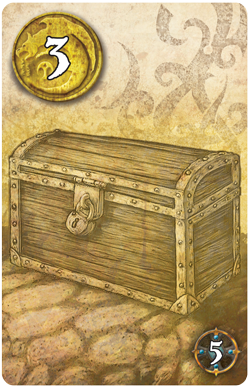Muchos esperábamos, que la contestación de FFG, a la moda de los juegos de cartas tipo Deck Builder (constructores de mazos), fuera el BloodBowl Team Manager (del que todavía poco se sabe), pero hace algunas semanas, se soltaron con este inesperado Rune Age, Deck Builder, ambientado en los mundos de Terrinoth, que tan bien conocen los seguidores del Descent, Rune Wars o RuneBound.
Como ha muchos nos sabia ha poco la información, hoy un más carnaza.
As the four great races of Terrinoth struggle to gain wealth and influence, the tentative armistice between them begins to unravel. But now, with conflict on the horizon and whisperings of a prophetic tide of woe approaching, the mighty Dragonlords have returned to claim Terrinoth for themselves. Even in the face of this common threat, however, the leaders of Human, Elf, Uthuk, and Undead cling to their hatred, each hoping to vanquish the ancient Dragonlords alone. Can one race prevail, or will their stubborn isolationism and agression lead to the destruction of Terrinoth?
Last month we announced the upcoming release of Rune Age, a card game of conquest and power in the rich fantasy setting of Terrinoth. Players familiar with deck-building games will find that designer Corey Konieczka brings his own unique twists to the genre, while retaining the basic elements of planning and tension that make it popular. But even if you’ve never played a deck-building game, Rune Age provides a satisfyingly competitive (or cooperative!) game experience that can be adjusted to your particular tastes.
While the basic mechanics of Rune Age undeniably offer a fresh take on the familiar deck-building experience (as we’ll see throughout future previews), they are merely the foundation on which its greatest innovation is based: scenario-driven gameplay.
A World of Opportunities
Scenarios in Rune Age might better be thought of as “game modes,” since each one sets up a victory condition and a few basic parameters, then leaves the subsequent game experience open to nearly infinite combinations of faction configurations, Event card conditions, strategic options, and individual play styles.
The first scenario, entitled Resurgence of the Dragonlords (which we’ll explore in more detail below), pits the leaders of Terrinoth against a common enemy... but since there can only be one winner, players must balance the threat of the mighty Dragonlords (the defeat of whom is a victory condition) against that of their neighbors. Other scenarios emphasize different degrees of direct player interaction, and there’s even a fully cooperative scenario that lets players work together to save Terrinoth from destruction!
 With this wealth of options, plus four factions
that each have their own tricks and strategies, Rune Age is a system with
remarkable versatility. The question is, what kind of game do you want it to
be?
With this wealth of options, plus four factions
that each have their own tricks and strategies, Rune Age is a system with
remarkable versatility. The question is, what kind of game do you want it to
be?An Ancient Enemy
Resurgence of the Dragonlords, the first scenario, puts the armies of the Daqan Lords, Latari Elves, Uthuk Y’llan, and Waiqar the Undying in a race to defeat a common enemy: the mighty Dragonlords who held Terrinoth under their oppressive rule in ages past.
After each player chooses a race and sets up his individual play area (including his faction-specific Unit cards available from his barracks), the central play area is set up, which consists of the Objective card, gold, neutral cities awaiting conquest, and neutral cards that can be acquired by any player. The selection of neutral cards in a given scenario is dictated on the back of the Objective card in play, but experienced players wishing to change the game can agree on alternate neutral cards, or can randomize them based on the included variant rules.
But whether you get them from your individual play area or the central play area, how do you "purchase" new units and tactics? Cards in Rune Age provide three different types of resources, and only through the skillful management of all three can victory be achieved.
For example, to begin your game, you might endeavor to take over the city of Riverwatch. To do so, you’ll need to commit a total of seven strength, after which you’ll be able to place Riverwatch in your play area and exhaust it once per turn to provide three influence. Unfortunately, even with a lucky draw, your starting deck will lack the strength to assault Riverwatch... so you’d better start by recruiting Unit cards from your barracks!



A Unit, Neutral City, and Gold card. The cost for each card is in the lower right,
and the resource it provides is in the upper left.
But be careful to keep your focus on the task at hand; in Resurgence of the Dragonlords, your ultimate goal is to accumulate enough strength to defeat the objective, representing a climactic final battle between your massive army and the mighty Dragonlords themselves... assuming they don’t destroy your empire first.
As we’ll see next time, however, the dynamic combat system ensures battles that can sometimes be unpredictable. Keep checking back for more on Rune Age, and look for this exciting new take on deck-building in the third quarter of 2011!


















0 comentarios :
Dí lo que piensas...